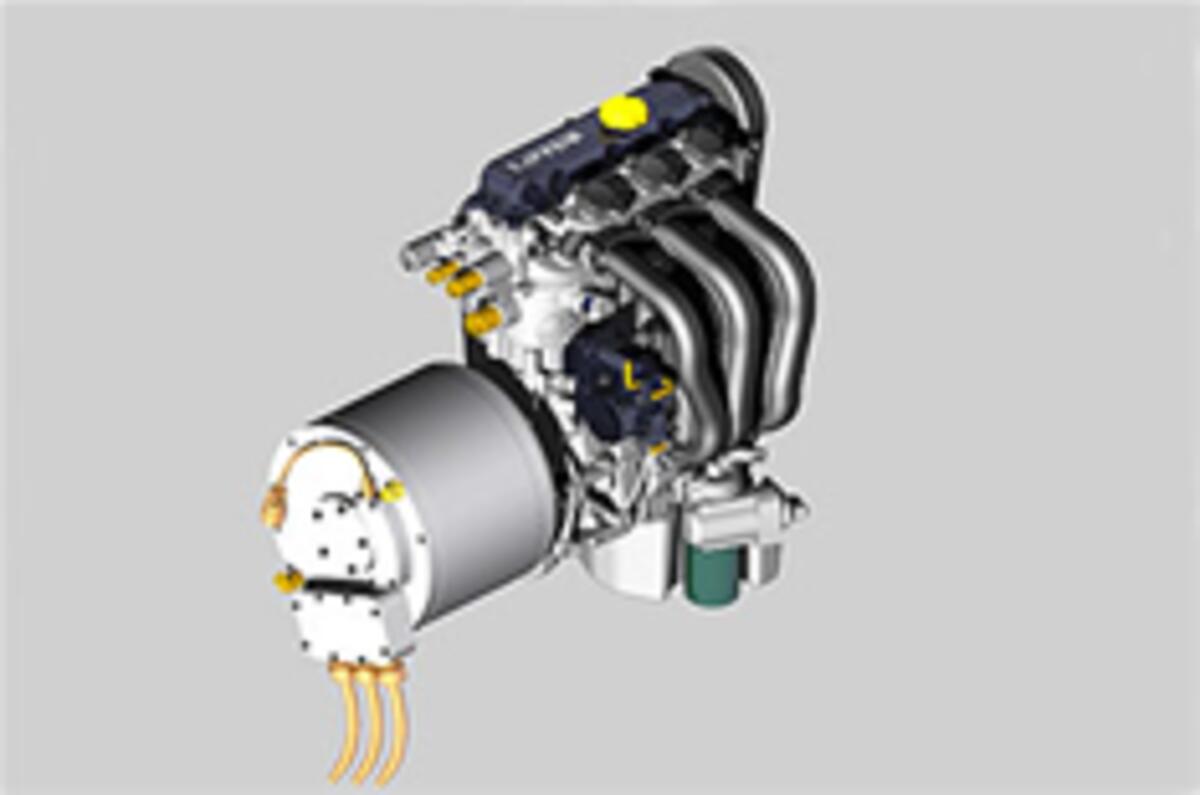Lotus has revealed a ground-breaking 1.2-litre range extender engine.
The unit, which is similar to that found in the Chevrolet Volt, produces 47bhp and will be fitted to a Jaguar XJ as part of a project to create an exectutive saloon with less than 120g/km emissions.
The 56kg three-cylinder petrol engine is attached to an electricity generator and powers both the car’s electric motor and charges a battery pack.
The engine is an all-new design from Lotus and features an aluminium monoblock construction integrating the cylinder block, cylinder head and exhaust manifold in one casting. This reduces weight, assembly costs and engine size, while improving emissions and durability.
Both alcohol-based fuels and petrol can be used. The unit has been designed by Lotus Engineering, the company’s consultancy-division, and will be sold to other manufacturers.
However, a spokesman for the car maker said it was a “possibility” it could appear in a Lotus.
“A lot of Lotus Engineering technology is for other manufacturers but Lotus looks at the best technology with regards to using it in its cars," he said.
Initially the Lotus range extender has been developed for a Jaguar, as part of the “Limo-Green” project funded by Lotus Engineering, Jaguar, MIRA and Caparo.
Jaguar told Autocar this technology could find its way into its road cars.
“This is the sort of technology we are looking towards,” said a spokesman.
An XJ mule will be ready by the end of the year to test the new Lotus range extender. The range extender will be on display at the Frankfurt motor show next week.
Twitter - follow autocar.co.ukSee all the latest Lotus reviews, news and video




Join the debate
Add your comment
Re: Lotus reveals eco engine
Lexus IS350 is DI and I suspect some other models are too.
Here's the kicker though for the so-called avant garde makes such as BMW, Lexus, etc.; Both Cadillac (CTS) and Ford (Taurus SHO) run DI engines with class leading power that are able to run on lower octane fuel (87RON). All Euro/Jap engines require at least 91 RON or premium unleaded.
Re: Lotus reveals eco engine
Look at Symanski’s Wikipedia link above, Mazda, GM, and others all use direct injection. Now that the emphasis on fuel efficiency has taken center stage getting more horsepower out of smaller engines just about requires the use of direct injection, like I said it is becoming the norm.
This Ford has direct injection now.
Re: Lotus reveals eco engine
I'm not an expert on this, but I believe that diesels are efficient at being able to run at a certain rev for long periods of time, hence their use as generators. If you then used it in automotive applications as a generator you can then optimise for very specific conditions. This would be how you'd get round the emissions problem because you no longer have to consider a wide operating range, but rather quite a narrow one.
The key here is that there is no drive connection from the engine to the wheels. It's all done by electric motors. Which also means you can put the engine anywhere you like in the car!